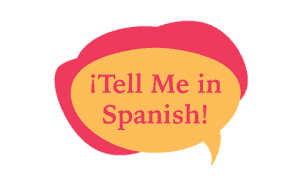The subjunctive and indicative moods are an essential part of Spanish conversations. For many learners, it’s challenging to identify when they’re supposed to use one mood or the other. Therefore, in this subjunctive vs indicative Spanish quiz, you’ll get to test your understanding of these grammatical elements.
Mi hermano siempre _______ la verdad.
My brother always tells the truth.
- A diga
- B dice
The indicative form 'dice' is used in this sentence to express a statement of fact or habitual action.
Espero que ustedes _______ a la fiesta.
I hope you come to the party.
- A van
- B vayan
The expression ‘espero que’ triggers the subjunctive because it expresses what we hope someone will do. So, for this example, the correct answer is ‘vayan’.
Necesito que tú _____ temprano.
I need you to come early.
- A llegues
- B llegas
In this example, we use the subjunctive form 'llegues' because we’re expressing a demand or request to someone else.
Mañana ______ viernes.
Tomorrow is Friday.
- A sea
- B es
This sentence is completed with the indicative form 'es' because it delivers factual information.
Ellos no ________ a mi fiesta.
They are coming to the party tonight.
- A vinieron
- B vinieran
This statement explains what the actions people didn’t do. Since this is real information that actually happened, the appropriate conjugation is the indicative form ‘vinieron’
Me alegra que ella _______ la verdad.
I'm glad she knows the truth.
- A sabe
- B sepa
‘Me alegra que’ expresses an emotion (joy) and introduces a subjunctive perspective (the action that makes someone feel this way). So, ‘sepa’ is the correct answer.
Esperamos que te ______ mi regalo.
We hope you like my gift.
- A guste
- B gusta
In this case, the verb ‘esperar’ conveys hope. In other words, we’re not certain that that person is going to like the gift. Since this is one of the applications of the subjunctive, ‘guste’ is the conjugation you should use to complete the sentence.
Ella _____ su tarea todos los días.
She does her homework every day.
- A hace
- B haga
The indicative form of 'hace' is used to complete this sentence since it refers to a routinary action.
Es probable que ellos _______ tarde.
It's likely that they will arrive late.
- A llegan
- B lleguen
‘Es probable que’ is an impersonal expression that triggers the Spanish subjunctive mood since it conveys probability and uncertainty. So, ‘llegue’ is the appropriate conjugation for this sentence.
Ojalá que _______ buen tiempo mañana.
Hopefully, the weather will be nice tomorrow.
- A haga
- B hace
‘Ojalá’ is a Spanish word that communicates wishes and hopes. As a result, it’s always followed by a verb in subjunctive form.
En México siempre ________ calor.
It’s always hot in Mexico.
- A haga
- B hace
This sentence describes how the weather usually is in Mexico. Since this is factual information, you must use the present indicative form ‘hace’ to complete the statement.
Quiz Results
| Question | Answer Given | Correct Answer | |
|---|---|---|---|
| Mi hermano siempre _______ la verdad. | |||
| Espero que ustedes _______ a la fiesta. | |||
| Necesito que tú _____ temprano. | |||
| Mañana ______ viernes. | |||
| Ellos no ________ a mi fiesta. | |||
| Me alegra que ella _______ la verdad. | |||
| Esperamos que te ______ mi regalo. | |||
| Ella _____ su tarea todos los días. | |||
| Es probable que ellos _______ tarde. | |||
| Ojalá que _______ buen tiempo mañana. | |||
| En México siempre ________ calor. |
Spanish vs Indicative Spanish Quiz Instructions
This is a 11 multiple-choice quiz. The provided options are verbs conjugated in the indicative or subjunctive form. Read each sentence carefully, pay attention to the speaker’s intention, the elements being used, and choose the appropriate verb conjugation for each context.
All the questions include a translation. However, take this information as guidance since the English subjunctive may vary.
Notes on Indicative vs Subjunctive Spanish Moods
Here are some key points that can help you refresh your memory on the differences between the indicative and subjunctive:
- Spanish moods, such as the indicative and the subjunctive, reflect the speaker’s perspective or attitude toward the information.
- In simple words, they express how the speaker feels or thinks about the information.
- The Spanish indicative mood is used to talk about actions, events, and states perceived as real or certain.
- The indicative is the most common mood since it allows people to talk about their daily lives, memories, plans, etc.
- On the other hand, the Spanish subjunctive mood is employed to convey demands, wishes, advice, emotions, and doubts about someone else’s actions.
- Sentences with the subjunctive are triggered by certain impersonal expressions or verbs that express hope, uncertainty, requests, etc.
- The indicative mood has five main tenses: the present, preterite, imperfect, future simple, and conditional.
- Meanwhile, the subjunctive tenses are present, present, perfect, past, and past perfect.
